In almost all fiction, there exists a battle that captivates our hearts and constitutes the very essence of a story. It is a clash of opposing forces, a dance of light and shadow, a struggle that gives birth to legends and ignites our imaginations. This battle between the Protagonist and the Antagonist is the beating heart of every gripping tale ever told.
To unlock the true power of storytelling, evoke raw emotions, elicit empathy and understanding, and traverse the vast spectrum of the human experience, writers must understand the roles of their protagonists and antagonists and the conflict between them.
Join us as we explore the differences and similarities between the two, delve into the intricate dynamics of their relationships, examine their conflicts, and present some examples of how their motivations unfold in various stories.
What is a Protagonist?
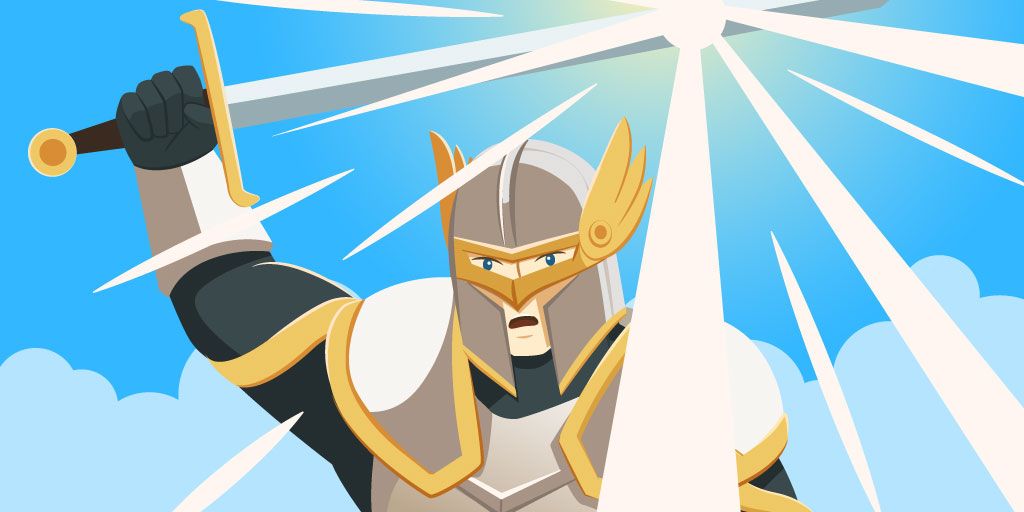
In storytelling, the protagonist is the central character around whom the narrative revolves. It is common for them to be the main character(s). They are the driving force behind the plot, and their actions, choices, and growth propel the story forward.
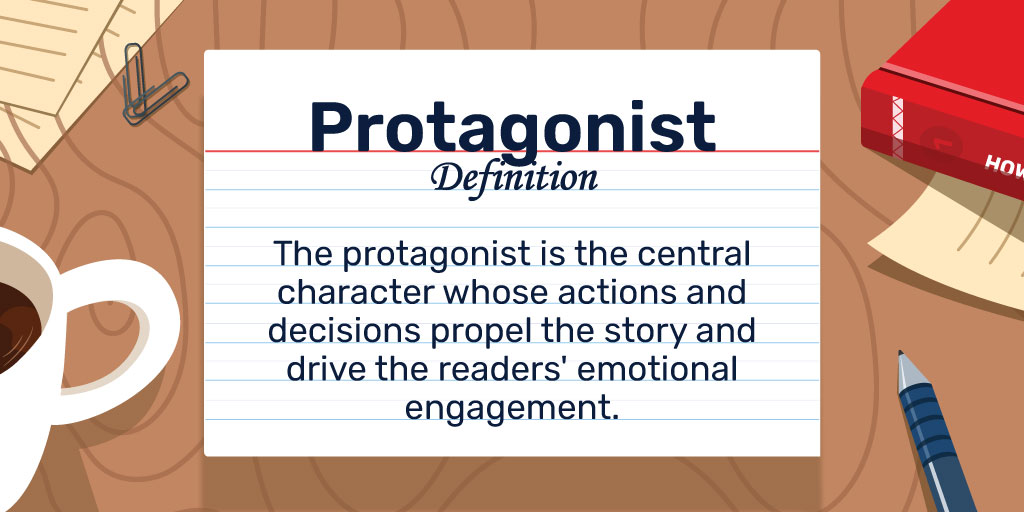
What sets the protagonist apart from other characters is their unique set of characteristics that shape their role in the narrative. These traits bestow upon them a distinct presence, causing them to stand out. Let’s delve into some key characteristics that are typically associated with protagonists:
- Agency: The protagonist is a proactive character who actively pursues their goals, making decisions and taking actions that shape the course of the story.
- Motivation: Their motivations drive the plot forward, whether it’s their desire for justice, personal fulfillment, love, or their quest for self-discovery.
- Complexity: Protagonists are complex and multi-dimensional characters. They have their own flaws, fears, and internal conflicts, making them relatable and human.
- Development: Throughout the story, they undergo development and growth, transforming in response to the challenges and experiences they encounter.
- Sympathy and Empathy: They are designed to evoke sympathy and empathy from readers. Their struggles, triumphs, and vulnerabilities resonate with us on an emotional level, creating a connection between the reader and the character. We invest in their journey and emotionally invest in their ultimate success or failure.
- Point of View: The protagonist often serves as the lens through which readers experience the story. We see events unfold from their perspective, allowing us to fully immerse ourselves in their world and gain insights into their thoughts, emotions, and motivations.
Protagonist Examples
The literature has given rise to countless protagonists that are responsible for the memorability of the stories in which they appeared. Here are some examples:
- Jane Eyre (“Jane Eyre” by Charlotte Brontë): Jane Eyre was a strong-willed, independent, principled, and determined woman who overcame abuse, oppression, and societal expectations in her quest for love and self-discovery.
- Atticus Finch (“To Kill a Mockingbird” by Harper Lee): Atticus Finch was a wise and compassionate lawyer in a racially divided town who defended an innocent black man accused of a crime. His integrity, empathy, and unwavering commitment to justice made him a moral beacon that drove the story forward.
- Carrie White (“Carrie” by Stephen King): Brought up by a harsh, abusive, Christian fundamentalist mother and relentlessly bullied by her peers at school, Carrie finally discovered her telekinetic powers and took revenge on the cruel world that wronged her.
Character Development Quiz (Easy)
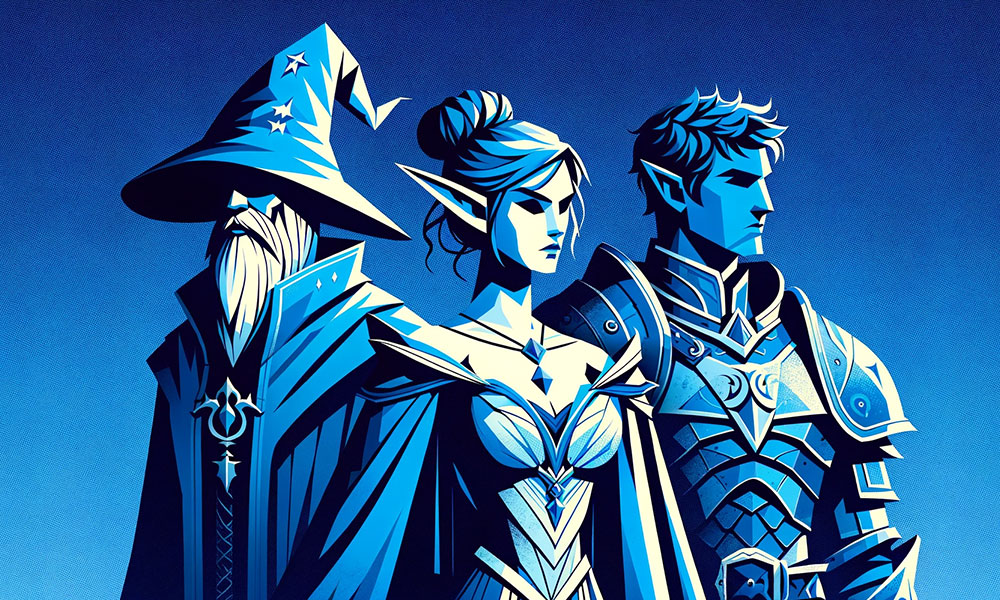
Types of Protagonists
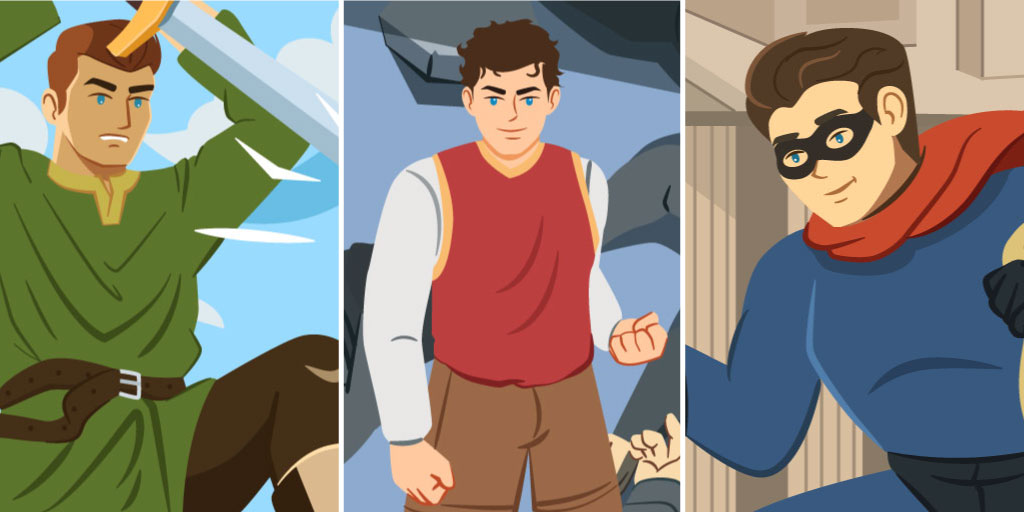
As is evident from the examples above, protagonists come in many different forms. While all of these types are the main sympathetic characters that determine the direction of the story, they can come from a variety of backgrounds, possess varying abilities, and drive the story in different directions. Let’s look at some protagonist types.
Hero
The hero is the quintessential protagonist, embodying bravery, noble virtues, and a strong sense of justice. They are often driven by a desire to protect others, fight for what is right, and uphold moral principles. Heroes are characterized by their courage, selflessness, and unwavering determination to overcome obstacles and defeat evil forces.
One example of a hero protagonist is Aragorn, later known as Strider, from J.R.R. Tolkien’s “The Lord of the Rings.” He plays a crucial role in the quest to destroy the One Ring and save Middle-earth from the dark forces of Sauron.
Anti-Hero
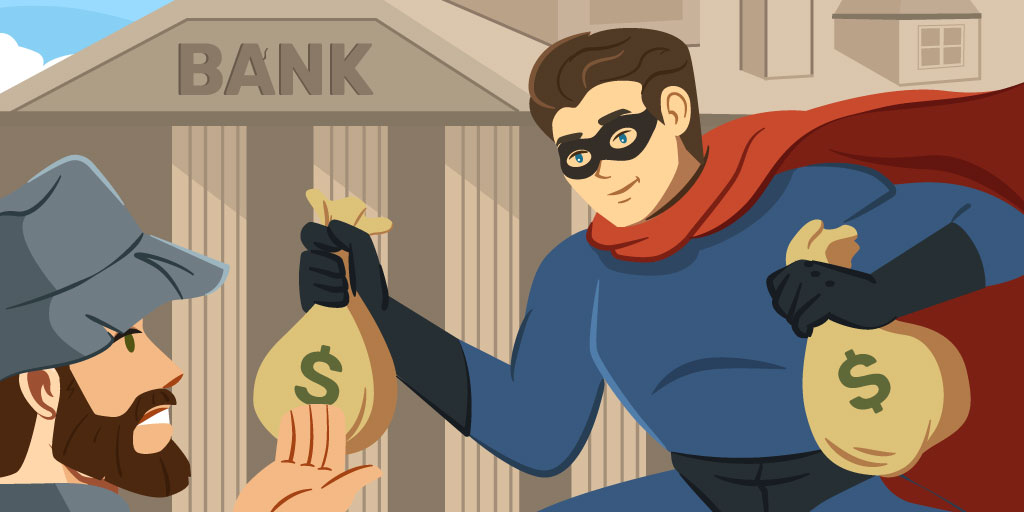
Unlike the traditional hero, the anti-hero possesses flawed or morally ambiguous qualities. They may have selfish motives, engage in questionable behavior, or possess a darker side.
However, despite their imperfections, anti-heroes often display redeeming qualities, such as wit, intelligence, or a strong sense of survival. They challenge conventional notions of heroism and provide a more complex and nuanced portrayal of protagonists.
Think Jay Gatsby from F. Scott Fitzgerald’s “The Great Gatsby”. His pursuit of the American Dream is driven by obsession and a desire to win back his lost love. While he engages in illegal activities and manipulates others, Gatsby’s flawed and enigmatic nature makes him a compelling anti-hero.
Villain
A further step down from the anti-hero, a villain protagonist serves as the central focus of a story despite having villainous qualities or engaging in morally questionable actions. Unlike traditional heroes, they operate outside the realm of conventional morality, often challenging or subverting societal norms.
They have a sympathetic back story and relatable motivations that often make readers cheer them on, but their actions and thoughts are unethical, reprehensible, and dishonorable.
Humbert Humbert, in Vladimir Nabokov’s novel “Lolita”, for example, is a middle-aged man who becomes infatuated with a 12-year-old girl whom he kidnaps and abuses. His pedophilic and manipulative behavior makes him an indisputable villain, but because he is so self-aware, readers get a disturbing glimpse into his twisted psyche and justifications.
Underdog

This type of protagonist starts from a disadvantaged position or faces seemingly insurmountable odds. They are often underestimated, marginalized, or face overwhelming challenges. However, their resilience, determination, and ability to rise above their circumstances make them compelling protagonists. Underdogs inspire readers by defying expectations and achieving success against all odds.
Charlie Bucket in Roald Dahl’s “Charlie and the Chocolate Factory” is humble, poor, and on the edge of starvation. But when he wins a golden ticket to visit Willy Wonka’s magical chocolate factory, he showcases his integrity, kindness, and resilience and beats the other winners.
Reluctant Hero
The reluctant hero is initially unwilling or hesitant to embrace their heroic role. They may resist taking on responsibilities or entering dangerous situations. However, circumstances or personal growth eventually compel them to step up and fulfill their destined role as a protagonist. Reluctant heroes often experience internal conflicts and struggle with their sense of duty or fear, adding depth and complexity to their character.
Bilbo Baggins in Tolkien’s “The Hobbit” loves his comforts and peaceful life and gradually has to discover his resourcefulness and courage on an unexpected adventure as the “burglar” accompanying a group of dwarves on a quest.
Tragic Hero
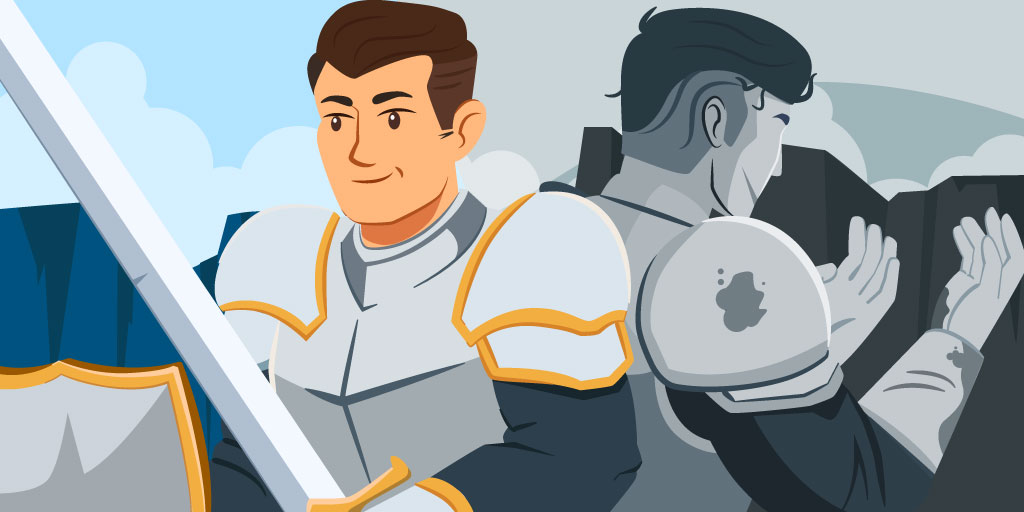
This tragic protagonist is characterized by their eventual downfall or suffering, often resulting from a personal or tragic flaw. Despite their admirable qualities and noble intentions, they are ultimately unable to overcome their own limitations or the forces working against them. Tragic heroes evoke empathy and reflection as readers witness their struggles and the consequences of their actions.
Shakespeare’s Macbeth is a noble and valiant general who becomes consumed by his ambition for power. His tragic flaw is his unchecked ambition and susceptibility to manipulation, leading him to commit heinous acts and spiral into madness, ultimately leading to his tragic downfall.
Outsider or Outcast
The outsider is a protagonist who exists on the fringes of society or is alienated from mainstream culture. They may be misunderstood, ostracized, or have unique perspectives that set them apart. These protagonists navigate the challenges of finding acceptance, identity, and belonging, providing insightful commentary on societal norms and prejudices.
Stieg Larsson’s “The Girl with the Dragon Tattoo” contains a character called Lisbeth Salander, who is a painfully introverted, asocial, social outcast and survivor of abuse and trauma, but she is also an intelligent and resourceful computer hacker who exposes corruption and seeks justice.
Chosen One
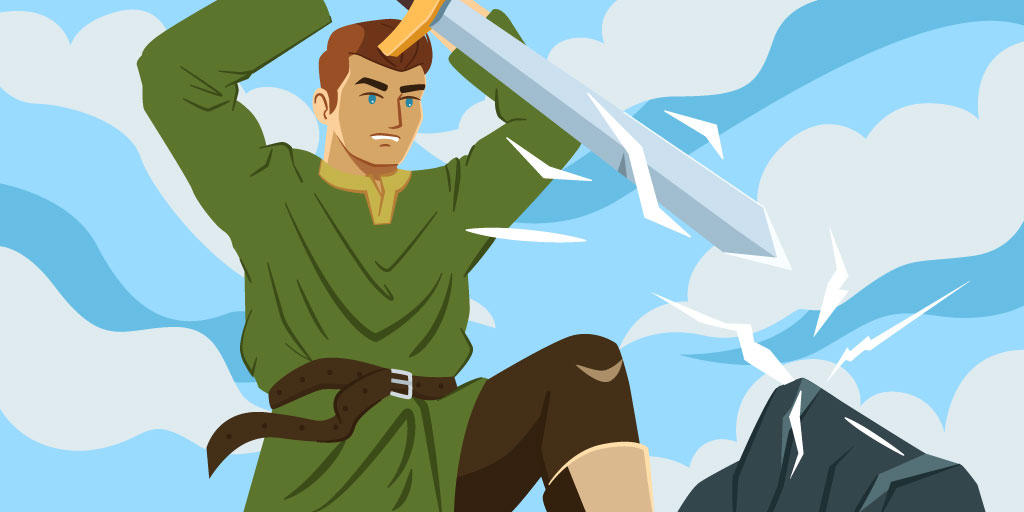
These special protagonists are destined for a special role or possess unique abilities that set them apart. They often discover their extraordinary status and must navigate the expectations and responsibilities that come with it. Chosen ones are at the center of epic quests, prophecies, or battles between good and evil, embodying the idea of destiny and the struggle to fulfill a higher purpose.
Neo in “The Matrix” is “The One” and becomes the figurehead of the human resistance, fighting against the oppressive machines and fulfilling his prophesied role in the liberation of humanity.
Everyday Person
The everyman or everywoman protagonist represents an ordinary individual who lacks extraordinary abilities or remarkable qualities. They are relatable characters that readers can easily identify with as they navigate everyday challenges and experiences. Everyman protagonists serve as a lens through which readers can see themselves in the story and reflect on universal human experiences.
Jane Austen’s creation Elizabeth Bennet, in her novel “Pride and Prejudice”, is spirited and independent-minded but has no special skills to navigate societal expectations, family dynamics, and the pursuit of love in Regency England.
Rebel
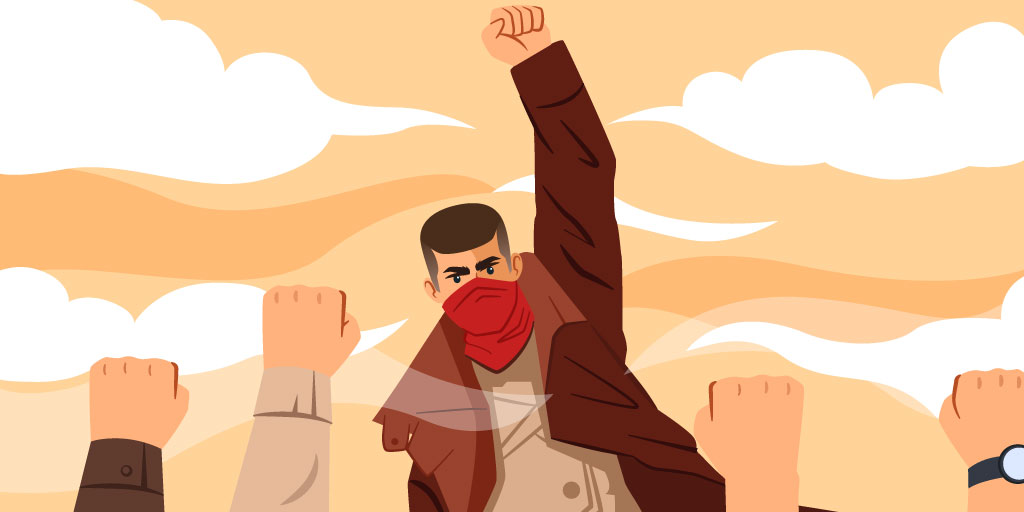
Revolutionary or rebel protagonists challenge the status quo and fight against oppressive systems or unjust authority. They possess a strong sense of social justice, often leading or inspiring others to join their cause. These protagonists embody the spirit of rebellion, sparking change and challenging the existing power structures.
Offred in Margaret Atwood’s “The Handmaid’s Tale2 is a handmaid in a dystopian society where women are subjugated for reproductive purposes. She rebels against the oppressive regime through acts of defiance and resistance, showcasing the strength and resilience of the human spirit.
Naïve Protagonist
These protagonists are innocent or naïve and lack experience or worldly knowledge. They often possess a childlike purity and optimism, navigating the complexities of the world with curiosity and a fresh perspective. Innocent protagonists encounter moral dilemmas, corruption, or harsh realities, leading to personal growth and wisdom.
The character Pip in “Great Expectations” is initially naïve and easily influenced by others, particularly by the manipulative Miss Havisham and the enigmatic convict Magwitch. His journey explores the loss of innocence and the complexities of human nature.
False Protagonist
A false protagonist is a narrative device where a character initially appears to be the main protagonist or central focus of the story but later reveals themselves to be secondary or even an antagonist. This technique subverts the audience’s expectations and adds a twist to the narrative structure. The purpose of a false protagonist is to create suspense, surprise, or enhance the overall storytelling impact. By presenting a character as the main protagonist early on, the audience becomes invested in their journey, only to have their perspective shifted as the true protagonist emerges or a different character takes center stage.
Dorothy Kingship appears to be a protagonist in Ira Levin’s “A Kiss Before Dying”, but she is quickly killed, replaced with another false protagonist that is also killed, and only then does the second of the two protagonists appear.
Tips for Writing a Protagonist

Your protagonist makes or breaks your story and should be written with depth, detail, emotion, and care. Here are some tips for creating a protagonist that your readers will connect with and remember.
1. Define Clear Goals
since this is the character that determines the direction of your story, give them specific and compelling goals that drive your plot forward. Goals create purpose, motivation, and action.
- Make their goals concrete, such as winning the love of the boy next door, as opposed to just pursuing love.
- Tie their goals to their values, dreams, and conflicts.
- Ensure that their goals are challenging but achievable.
- Spell out the stakes and the potential consequences of success and failure.
2. Develop Strengths and Flaws
Create a well-rounded protagonist by giving them both strengths and character flaws. This adds depth and complexity to their character, making them more relatable and human.
Avoid making them too perfect or too flawed. Even villains have reasons why they commit their appalling acts of destruction, and even heroes lack certain skills. These nuances often give meaning to your story and explain why things happen.
3. Show Growth and Development
Allow your protagonist to evolve and grow over the course of the story. They should face challenges, learn from their experiences, and undergo personal transformation, making their journey more impactful and satisfying.
Although this growth often occurs during conflict, it’s essential to explicitly depict their development through their thoughts and actions.
You should also create a diverse cast of supporting characters who challenge, support, and influence your protagonist. These characters can provide opportunities for growth, conflict, and interesting dynamics that shape your protagonist’s journey.
4. Create Relatable Emotions
Given that the protagonist is the character with whom your readers most closely identify, it’s crucial to make their emotions relatable and understandable. Delve into their desires, fears, and values, rendering their choices and actions both believable and emotionally resonant. It’s through their hopes, fears, and struggles that readers can empathize with them and root for their success.
Well-described emotions can often make sense of reprehensible actions, such as in Scott Smith’s great thriller called “A Simple Plan”, in which readers cheer on protagonist Hank even while he steals and kills.
5. Craft a Compelling Backstory
Like goals and emotions, backstories help to explain your protagonist’s personality, motivations, and actions.
Jay Gatsby’s goal to amass great wealth and gain acceptance in high society’s social circles doesn’t make him a likable protagonist. But when we learn he was born into a poor family and felt a desperate love for wealthy socialite Daisy Buchanan, his actions and motivations become a lot more sympathetic.
What is an Antagonist?
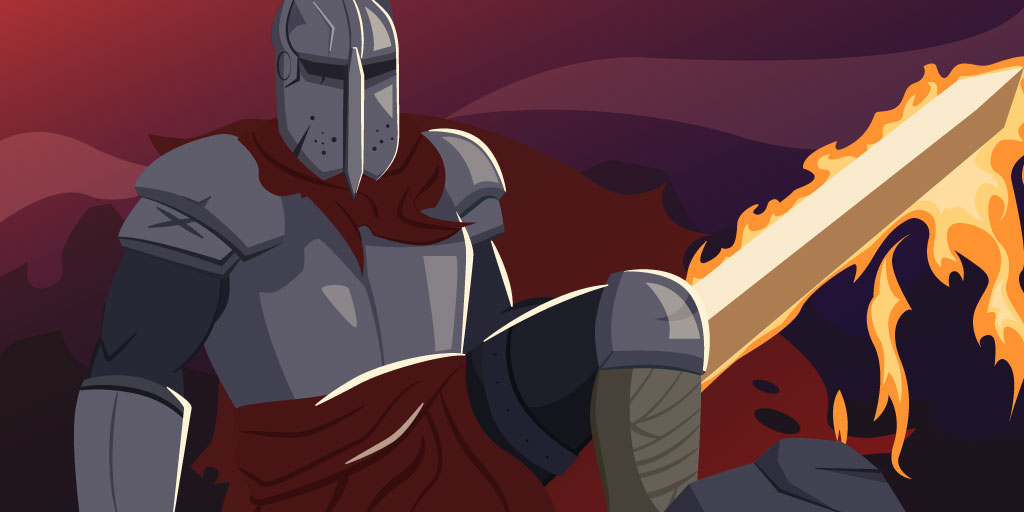
An antagonist is a character or force that opposes or creates conflict for the protagonist in a story. They serve as the primary source of obstacles, challenges, and opposition, driving the narrative tension and creating a counterbalance to the protagonist’s goals.
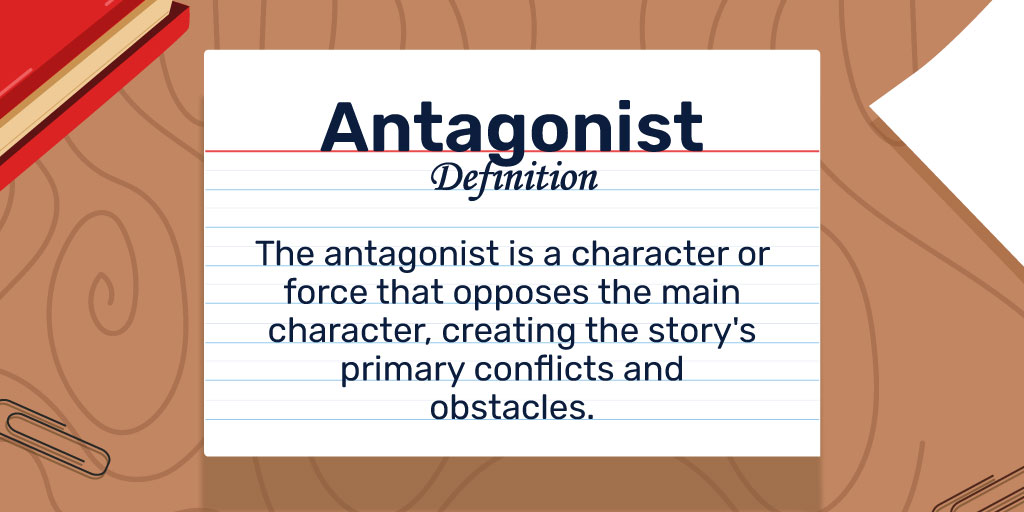
Here are some unique characteristics of antagonists:
- Opposes the Protagonist: The antagonist directly opposes the goals, desires, or journey of the protagonist. They actively work against the protagonist’s progress, creating conflicts and obstacles that impede their success or growth.
- Conflict Catalyst: Because of their oppositional role, they play a pivotal role in driving the story’s conflict. Their actions, motivations, or beliefs clash with those of the protagonist, leading to confrontations, challenges, and dramatic tension that move the narrative along.
- Varied Motivations: Antagonists can have diverse motivations for their opposition. They may be driven by personal vendettas, a desire for power or control, ideological differences, or even their own traumas or insecurities. Understanding their motivations adds depth to their character and makes their actions more nuanced.
- Multi-Dimensional: Effective antagonists are multi-dimensional characters with their own beliefs, flaws, and complexities. They should not simply be one-dimensional “villains.” Well-developed antagonists have depth, allowing readers to understand their perspectives and even sympathize with their motivations, even if they disagree with their actions.
- Versatility: Antagonists can take various forms, including individuals, groups, supernatural entities, or even internal struggles within the protagonist’s own psyche. They can be human or non-human, representing both external and internal sources of conflict.
- Significant Impact: Antagonists leave a lasting impact on the story and the protagonist’s journey. Their actions and influence shape the narrative arc, driving the protagonist’s transformation and determining the outcome of the conflict.
Antagonist Examples
Antagonists should be just as memorable as protagonists, and some authors have created such good ones that we cannot recall certain stories without bringing them to mind and evoking strong emotions.
- Miss Havisham (“Great Expectations” by Charles Dickens): This antagonist is a jilted bride who becomes a vindictive and manipulative character in Dickens’ novel. She seeks revenge on men through her ward Estella, manipulating her to break hearts and perpetuate her own bitterness.
- Big Brother (“1984” by George Orwell): Big Brother represents the oppressive and totalitarian regime in Orwell’s dystopian novel. It serves as the symbol of surveillance, control, and manipulation, constantly monitoring and suppressing individual freedom.
- Harmas and Maddux (“There’s Always a Price Tag” by James Hadley Chase): Harmas and Maddux are insurance investigators who stumble onto a plot by protagonist Glyn Nash to cash in on a life insurance policy to which he became entitled by committing a range of crimes.
Types of Antagonists
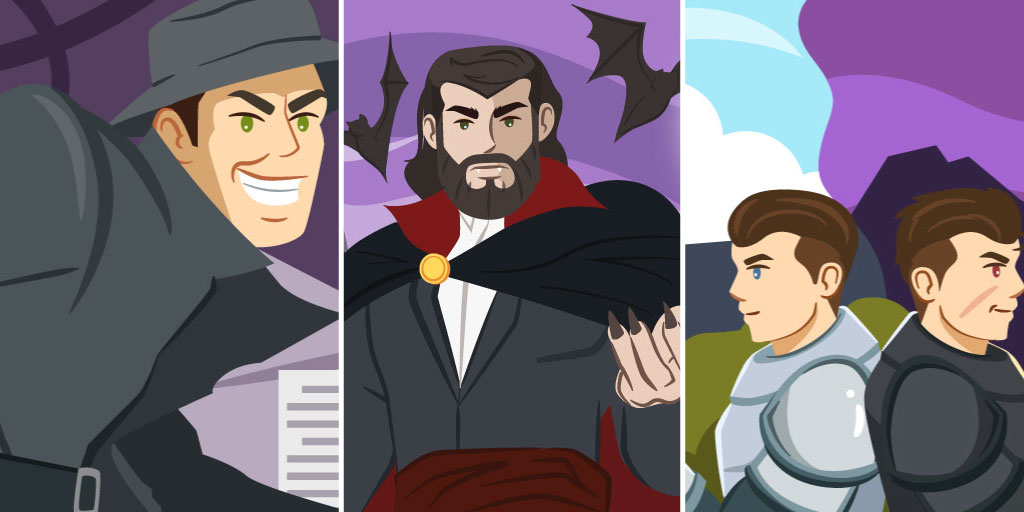
Like protagonists, there are a few types of antagonists too. While all of these types are the main force that acts to oppose the protagonist, they can take on a variety of forms and possess various motivations. Let’s look at some antagonist types.
Villain
A villain is a classic type of antagonist. They are characters who actively oppose the protagonist and engage in malicious or evil actions. Villains can be motivated by power, revenge, or personal gain, and they create conflict and obstacles for the protagonist.
One example is Lord Voldemort in the Harry Potter series by J.K. Rowling, who represents the embodiment of evil and is determined to kill Harry and establish his own dominance, power, and immortality.
Nemesis
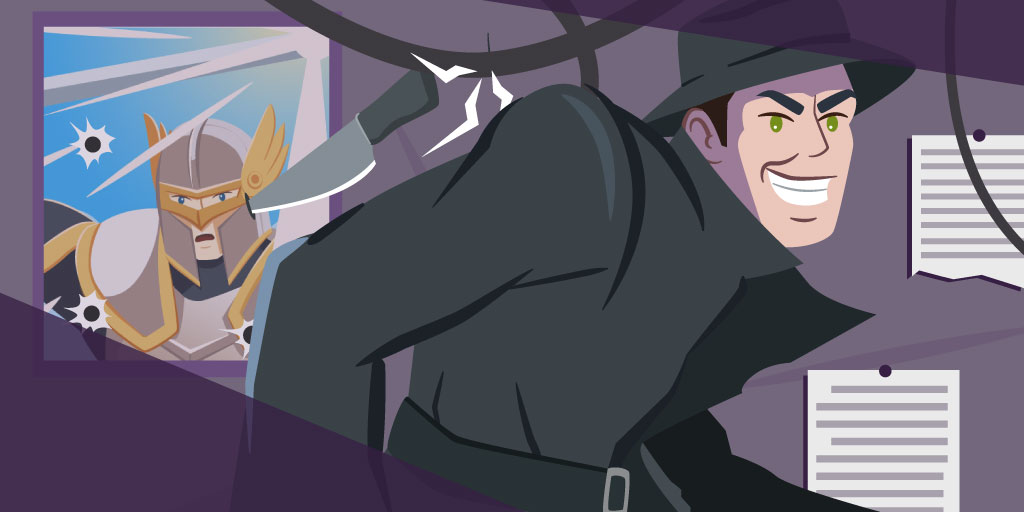
This is also a type of villain but is designed exclusively to be the protagonist’s archenemy rather than to pursue wider goals. They often have a personal vendetta or deep-rooted animosity towards the protagonist and actively seek to thwart their plans or cause harm. The nemesis serves as a persistent and formidable adversary driven by a strong desire for revenge or domination.
A good example is Annie Wilkes in Stephen King’s novel “Misery”. She develops an obsession and personal vendetta against the author, Paul Sheldon, whom she traps and tortures in her house. When she dislikes the direction his books take, her obsession transforms into a violent and possessive determination to control his writing.
Inanimate Force
An inanimate force antagonist refers to an entity or element that creates conflict or poses a threat to the protagonist but is not human. It could be a natural disaster like a hurricane or earthquake, a computer, a virus, or an animal.
Examples include the shark in “Jaws” by Peter Benchley, the time loop in Groundhog Day, and the supervolcano in “Ashfall” by Mike Mullin.
Supernatural or Mythical Being
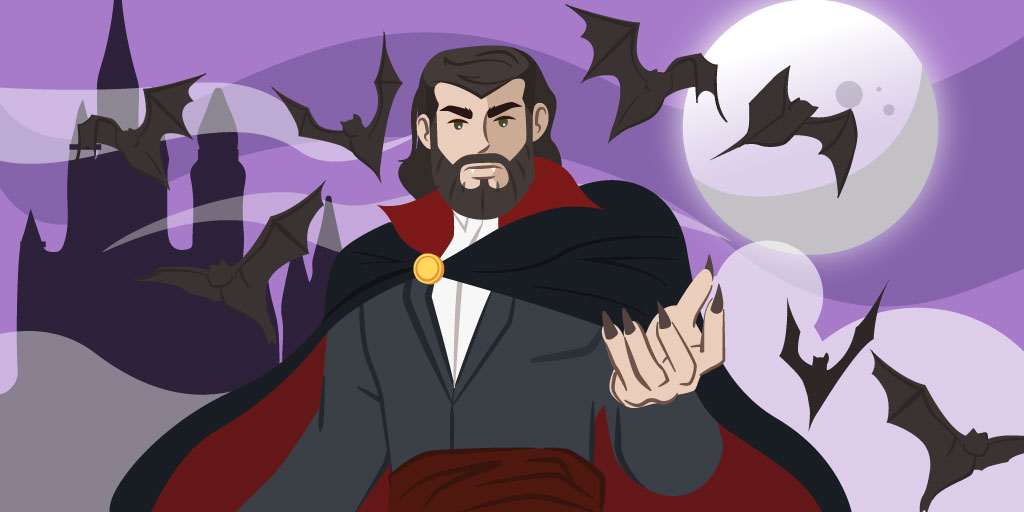
Supernatural or mythical beings add an element of fantasy or the supernatural to the story. These antagonists possess extraordinary powers or abilities beyond human capabilities. They can be gods, vampires, zombies, monsters, or creatures from folklore or mythology.
Bram Stoker’s Dracula and Mary Shelley’s Frankenstein Monster are unforgettable antagonists.
Society or Institution
In some stories, the antagonist takes the form of a societal or institutional structure that oppresses or opposes the protagonist. It could be a corrupt government, a totalitarian regime, or a discriminatory organization. The protagonist’s struggle may involve fighting against oppressive systems or challenging societal norms.
One example is “The Handmaid’s Tale” by Margaret Atwood, where the oppressive Gilead regime acts as the antagonist.
Doppelgänger
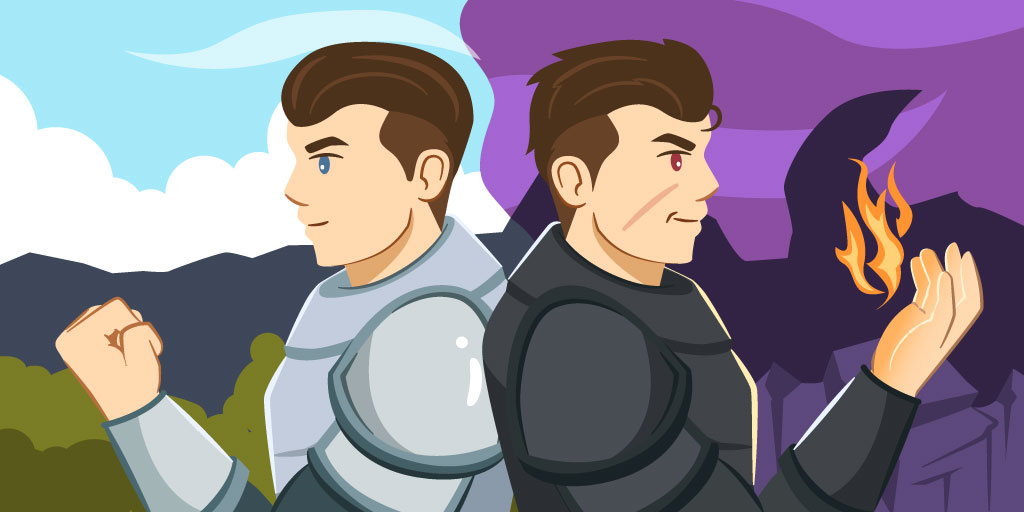
This is an antagonist who shares similarities with the protagonist but possesses darker or opposite traits. They often serve as a mirror or foil to the protagonist, representing the darker aspects of their personality or potential. This type of antagonist challenges the protagonist’s sense of identity and morality.
The usually moral superhero Spider-Man has given rise to many doppelgängers over the years; some created when Peter Parker bonded with evil alien symbiotes, some resulted from powerful minds or viruses taking control of his body, and others produced during failed genetic experiments. Doppelgängers like the Venom alien symbiote, Superior Spider-Man, and Spider-Carnage, did not only have superior abilities but were also vicious and morally depraved.
Anti-hero
An anti-hero can sometimes serve as an antagonist to the conventional hero or act in opposition to the protagonist’s goals. Anti-heroes are half-nice, half-nasty, or half-good, half-bad because of conflicting motivations. They blur the line between hero and villain.
In Dean Koontz’s novel “Watchers”, Lemuel Johnson works for the National Security Agency, and his search for the genetically modified dog, Einstein, makes him a serious threat to the protagonists. But because of lessons learnt throughout the novel, he realizes that he doesn’t want Einstein to live in government captivity and switches allegiance right at the end.
Internal Antagonist
An internal antagonist refers to a character’s internal conflict, struggles, doubts, or conflicting desires that create obstacles for the protagonist. It can manifest as their own fears, insecurities, or personal flaws that they must overcome or reconcile. These internal conflicts can drive the character’s development and provide layers of depth to the story.
Examples are the internal struggle faced by Hamlet in Shakespeare’s play “Hamlet” or the battle against addiction in “Trainspotting” by Irvine Welsh.
Tips for Writing an Antagonist

Some authors don’t understand the need for good, memorable, nuanced antagonists and, as a result, write prototypes of the evil character to play this role. But as you can see from the examples above, the stories that resonate with readers for years or decades contain well-developed, deep antagonists. To write one of these, follow the strategies in the sections below.
1. Consider the Antagonist’s Perspective
Before you even start writing, try to understand the world through your antagonist’s eyes. Delve into their mindset and explore the rationale for their actions. This will help you write a more compelling and believable antagonist.
Bad guys don’t think of themselves as bad guys, and they don’t think of their evil deeds as evil deeds. They think of themselves and their deeds as something else. It is crucial to flesh out that something else until you have some sympathy with your protagonist.
2. Develop Motivations and Backstories
As you write, ensure that your antagonist possesses clear and compelling motivations for their actions. Construct a unique blend of desires, fears, and past experiences that fuels their opposition to the protagonist. This approach will lend depth and complexity to their character, making their actions more understandable and credible.
3. Create Strong Opposition
Make your antagonist a formidable challenge for the protagonist. There are many ways to do this.
- Give Them Opposing Skills: Create an antagonist with skills, abilities, or resources that pose a significant challenge to the protagonist. If your protagonist is a skilled detective, make the antagonist a master of deception or a genius manipulator who can outwit them.
- Develop Strong Moral Opposition: Make your antagonist hold contrasting values or beliefs to the protagonist. This creates a clash of ideologies and adds depth to the conflict. If your protagonist fights for justice and equality, the antagonist could be an unscrupulous figure who prioritizes personal gain over ethical considerations.
- Establish Clear Goals: Give your antagonist clear and compelling goals that directly conflict with those of the protagonist. Their objectives should create obstacles and challenges that impede the protagonist’s progress. For example, if your protagonist is trying to save a community from destruction, the antagonist might be a developer who wants to demolish the area for profit.
- Create Personal Stakes: Provide your antagonist with personal stakes that make their opposition to the protagonist more intense. This could be a deep-seated grudge, a desire for revenge, or a personal connection to the protagonist’s backstory. These personal stakes add emotional weight to their actions and make the conflict more personal.
4. Emphasize Antagonistic Actions
Demonstrate your antagonist’s opposition through their actions, choices, and behaviors. Show how they actively work against the protagonist’s goals, creating obstacles and conflict.
Illustrate the antagonist’s ability to rally allies who aid in their antagonistic actions. Showcase their skill in manipulation and deception. Show the traps they set, the barriers they create, and the schemes they devise.
Demonstrate their willingness to inflict harm or pose threats to the protagonist, their allies, and things they care about. Stage direct confrontations between the antagonist and the protagonist either as physical combat, verbal sparring, or other types of battle.
5. Show Conflicting Qualities
Explore conflicting qualities within your antagonist. They can possess redeeming qualities or moments of vulnerability, making them more than just a straightforward antagonist. This complexity will make them more interesting and engaging.
Protagonist vs. Antagonist

Both protagonists and antagonists are better when they have complex and multi-dimensional characteristics, both play crucial roles in driving the narrative forward, and both contribute to the central conflict.
But they have opposing goals and objectives. The protagonist seeks to achieve something positive or overcome challenges, while the antagonist actively opposes or hinders the protagonist’s progress.
The narrative often aligns with the perspective of the protagonist, giving readers insight into their thoughts, emotions, and experiences. In contrast, the antagonist’s perspective is frequently portrayed as oppositional to the protagonist’s, providing alternative viewpoints and motivations.
Protagonists often undergo significant character development throughout the story, learning, growing, and evolving as they overcome challenges. Antagonists, on the other hand, may experience less pronounced character arcs, as their purpose is primarily to provide conflict and opposition to the protagonist.
In the following, you can find an overview that summarizes the differences and similarities between protagonists and antagonists:
Characteristic | Protagonist | Antagonist |
|---|---|---|
Objective | Pursues a positive goal | Opposes the protagonist’s goal |
Actions | Tends to act in line with societal norms and values | May exhibit morally questionable or villainous behaviors |
Perspective | Story is aligned with the protagonist’s viewpoint | Provides an alternative viewpoint and motivations |
Character Arc | Undergoes significant character development | May have a less pronounced character arc |
Complexity | Multi-dimensional and complex | Multi-dimensional and complex |
Impact on the Story | Drives the narrative forward | Provides conflict and opposition |
Influence on Other Characters | Inspires, challenges, or influences supporting characters | Can have an impact on other characters, driving their development |
Source of Conflict | Contributes to the central conflict | Contributes to the central conflict |
Reflecting Themes and Values | Embodies larger themes or values | Embodies larger themes or values |
Frequently Asked Questions
To further explore the dynamic interplay between protagonists and antagonists, we address commonly asked questions to shed light on their roles, characteristics, and impact on narratives.
Can a Protagonist Be a Bad Character?
Yes, a protagonist can be a bad character. While they are typically portrayed as morally upright or heroic, there are stories where the main character may exhibit flawed, morally ambiguous, or even villainous qualities. So long as a character is the driving force behind the plot, with their actions propelling the story forward, they can be the protagonist.
Can an Antagonist Be a Good Character?
Yes, an antagonist can be a good character. While antagonists are often portrayed as villains, there are instances where they possess redeeming qualities or complex motivations that make them more than just one-dimensional “bad guys.” When the protagonist is a villain, the antagonist is usually a good character.
Can a Protagonist Also Be an Antagonist?
Yes, a protagonist can also be an antagonist. This occurs either when the protagonist acts as an obstacle or causes harm to other characters, or when some of their emotions or motivations hinder their own progress or cause harm to themselves.
Can an Antagonist Be the Main Character?
Yes, an antagonist can be the main character of a story. Jaws in “Jaws” and Dracula in “Dracula” are two examples.
Can a Story Have Multiple Protagonists or Antagonists?
Yes. In fact, most full-length novels have multiple protagonists and/or antagonists. Having multiple protagonists or antagonists can provide a richer and more multi-dimensional narrative experience.
Can a Story Exist Without a Protagonist or Antagonist?
Yes, a story can exist without a traditional protagonist or antagonist, but they tend to be experimental, highly literary works that aren’t especially widely read. Such stories focus more on the exploration of a setting, theme, or concept rather than being driven by specific characters in opposing roles.
One example is “Waiting for Godot” by Samuel Beckett, a play in which two characters talk to each other and to passers-by while awaiting the Godot, who never arrives.
What is Another Word for Protagonist?
Other terms for protagonist are:
- main character
- leading character
- principal character
- primary character
- key character
- focal character
- lead
- central figure
- prime mover
- hero (which is not always accurate)
What is Another Word for Antagonist?
Other terms for antagonist are:
- adversary
- opponent
- foe
- enemy
- rival
- competitor
- nemesis
Final Thoughts
A strong protagonist allows readers to invest in the story’s journey, root for a character’s success, and to witness their growth and transformation. Equally important are well-crafted antagonists who challenge the protagonists, acting as formidable obstacles or sources of conflict.
When protagonists and antagonists are both meticulously developed, their interactions and conflicts become the propelling force of the narrative. This dynamic creates the necessary conflict, tension, and engagement that captivates readers and evokes their emotions.
Character Development Quiz (Hard)








